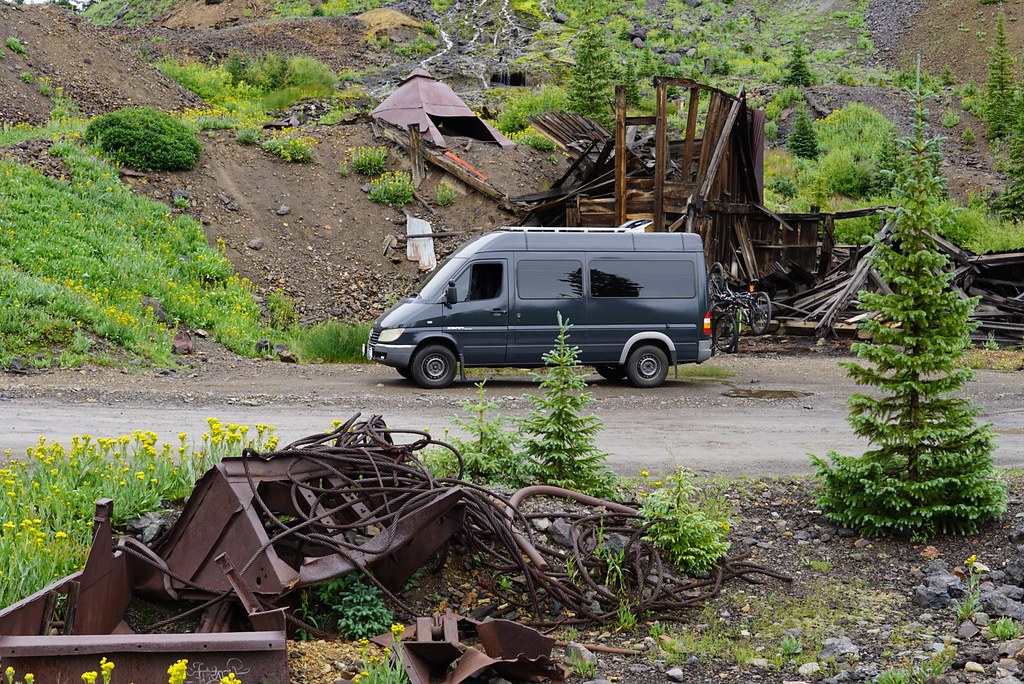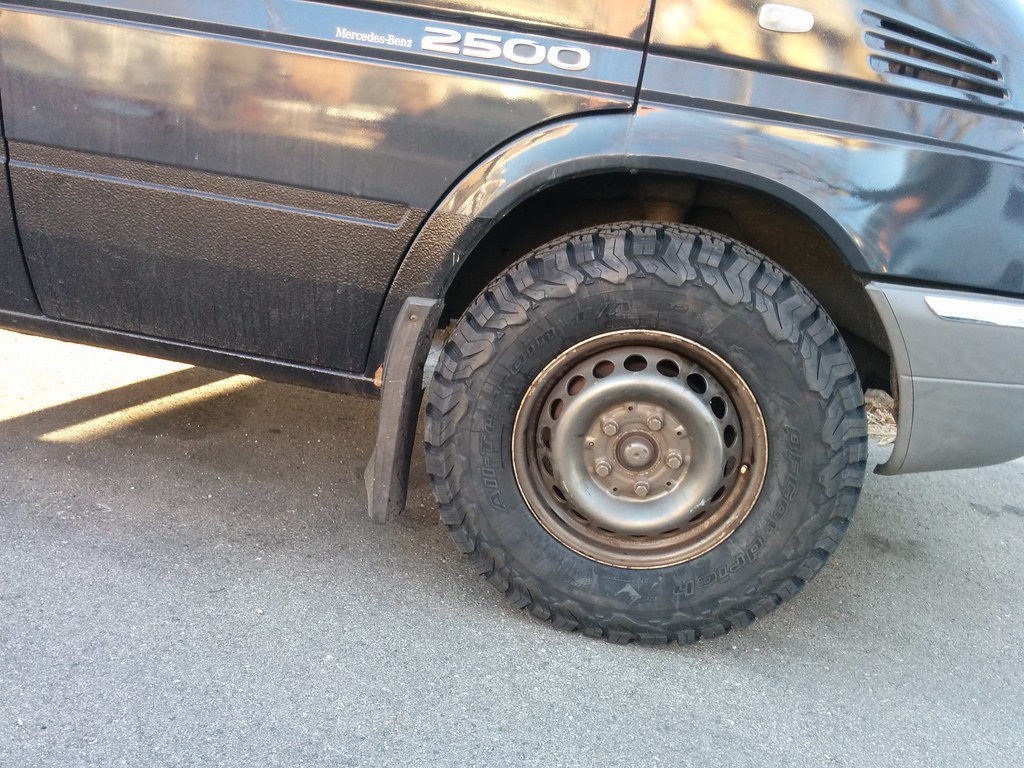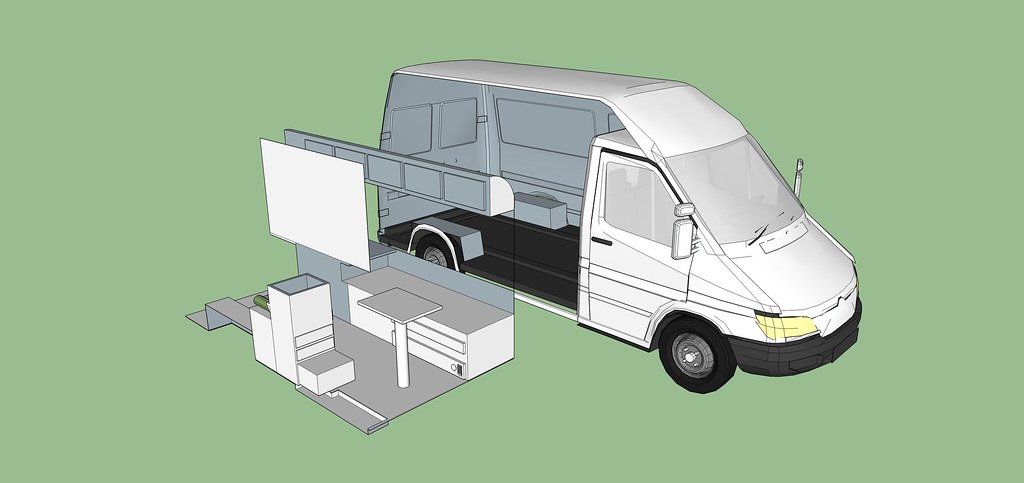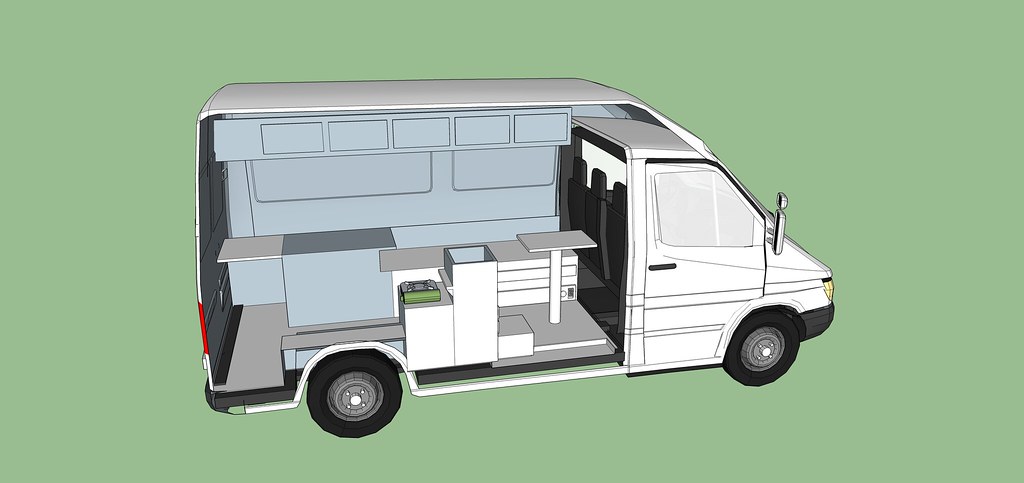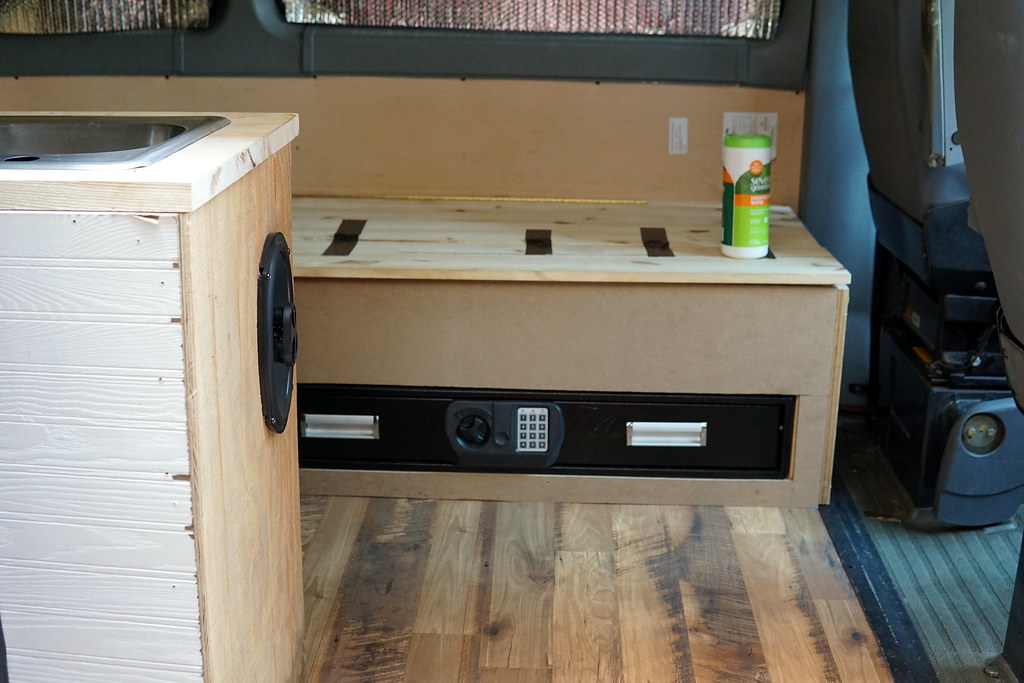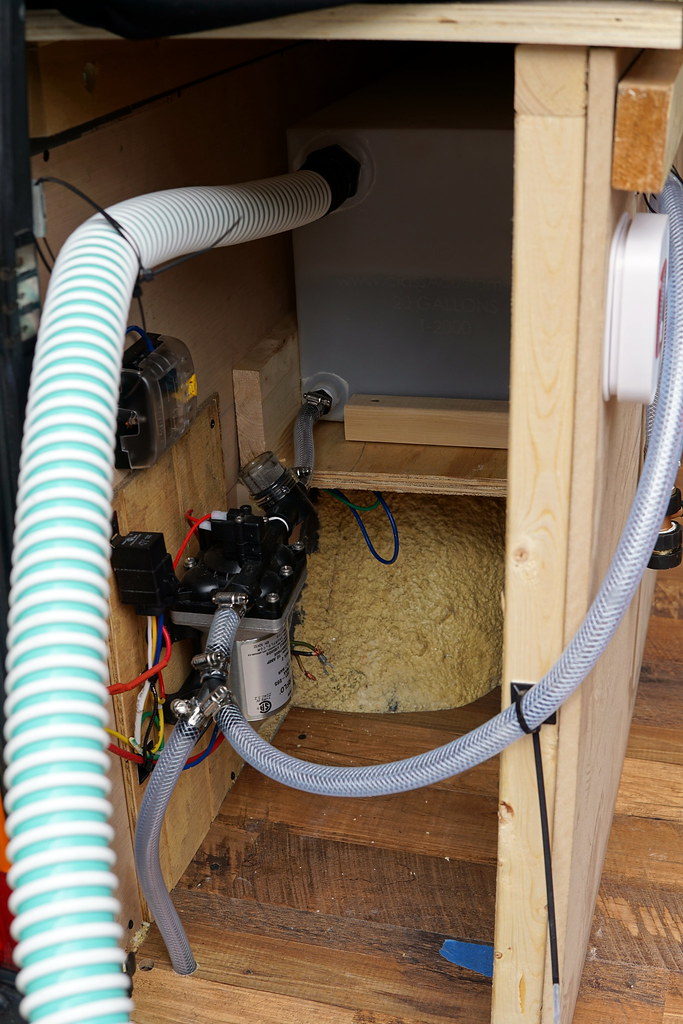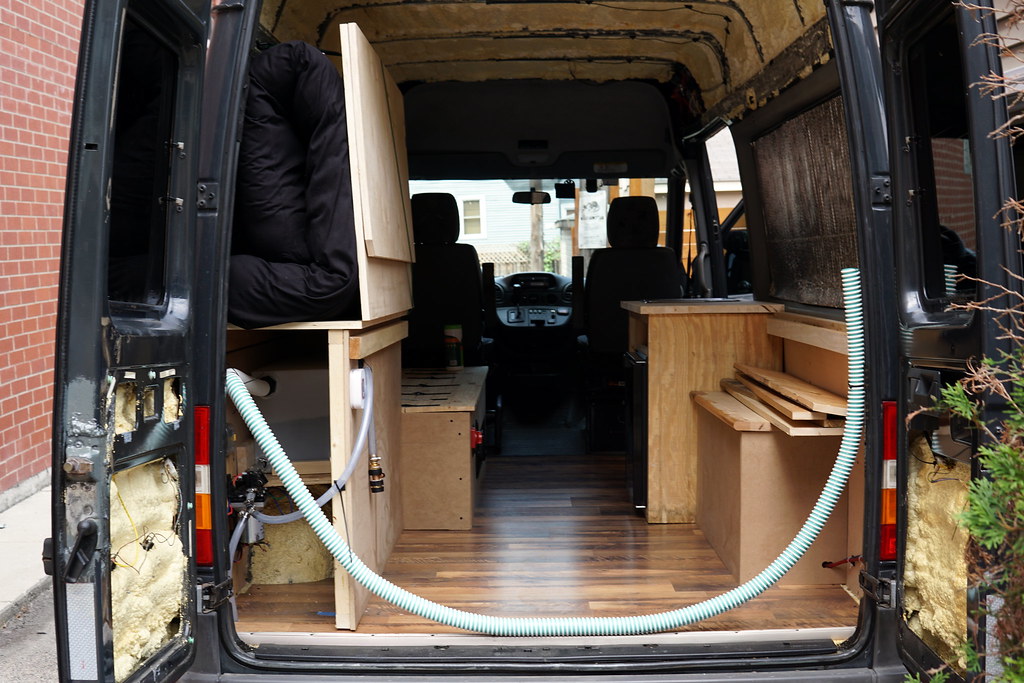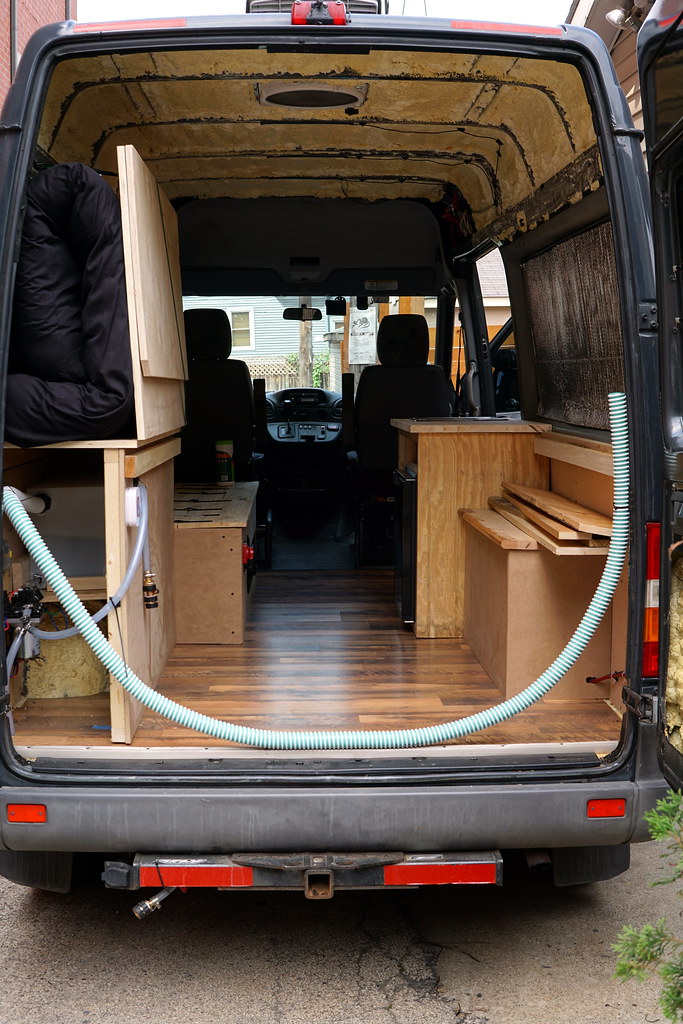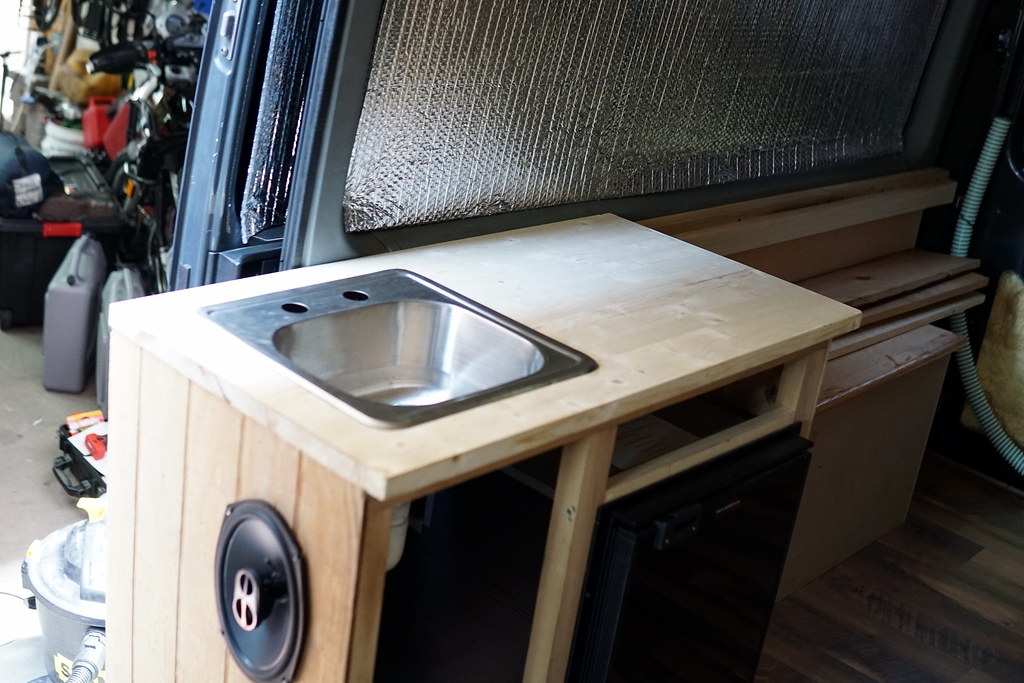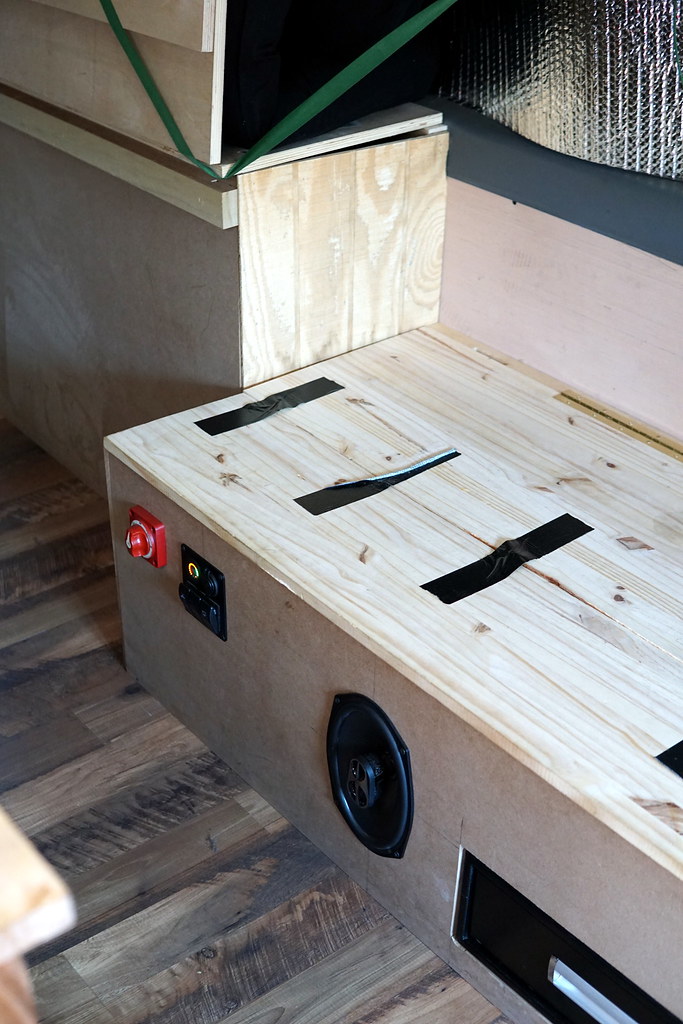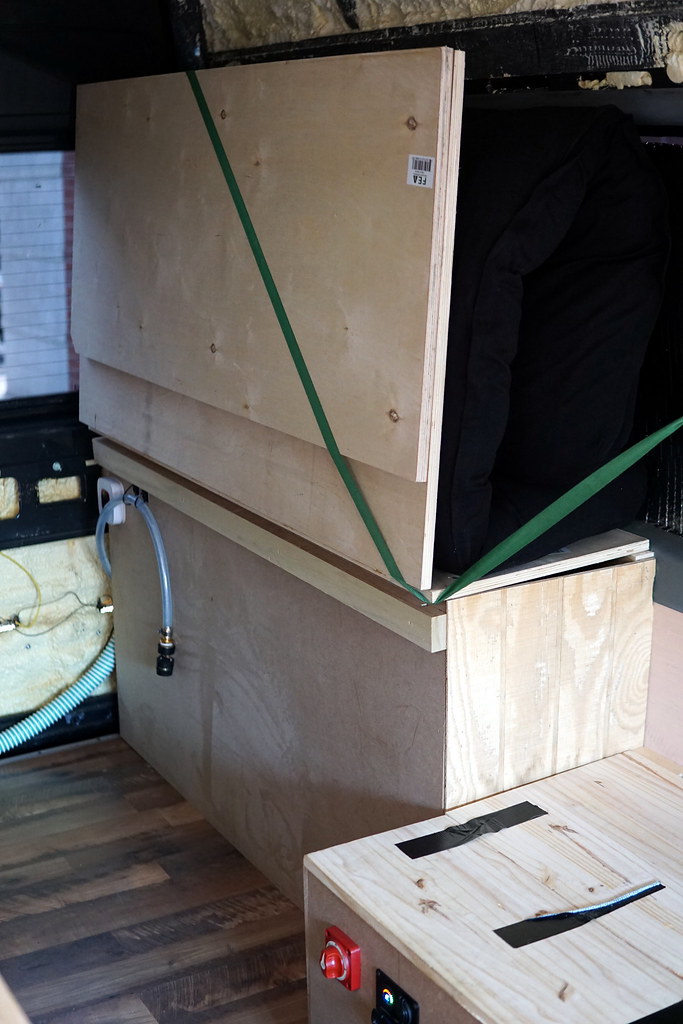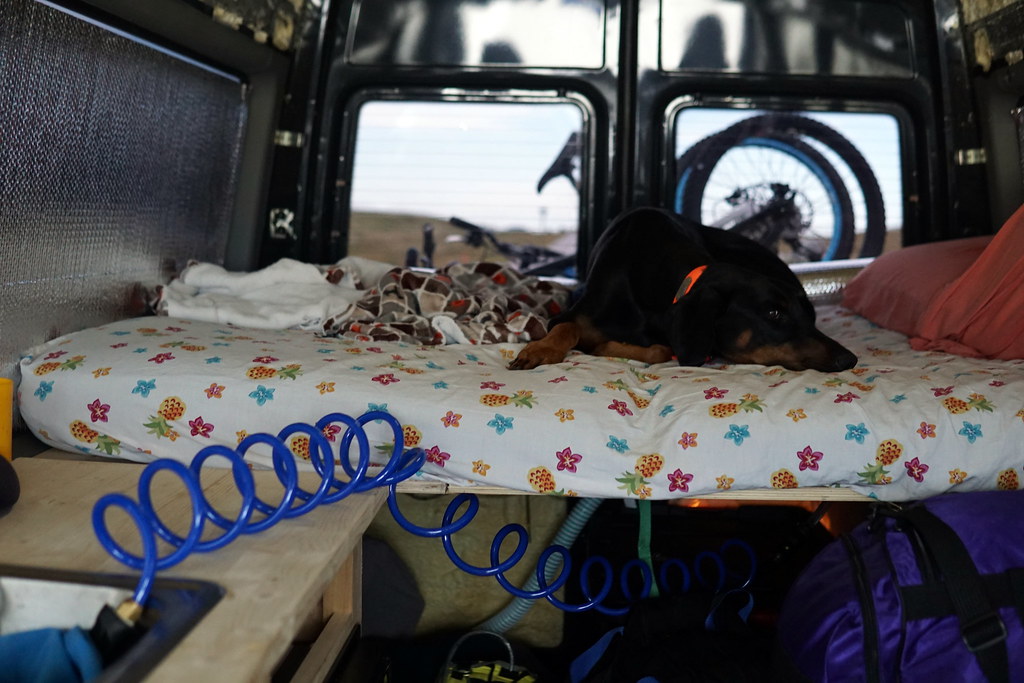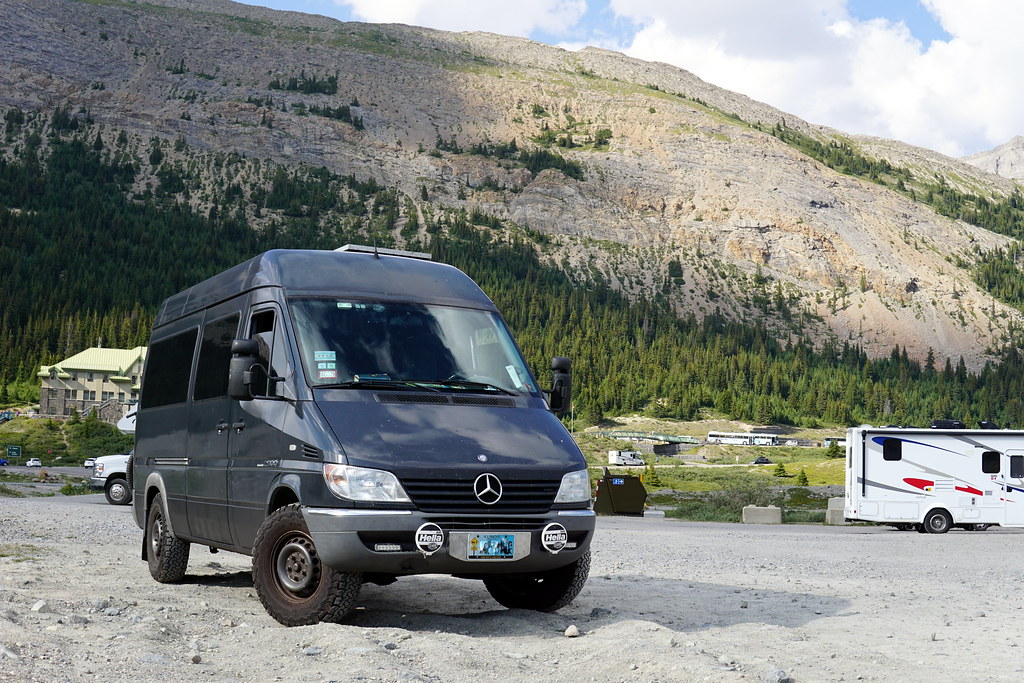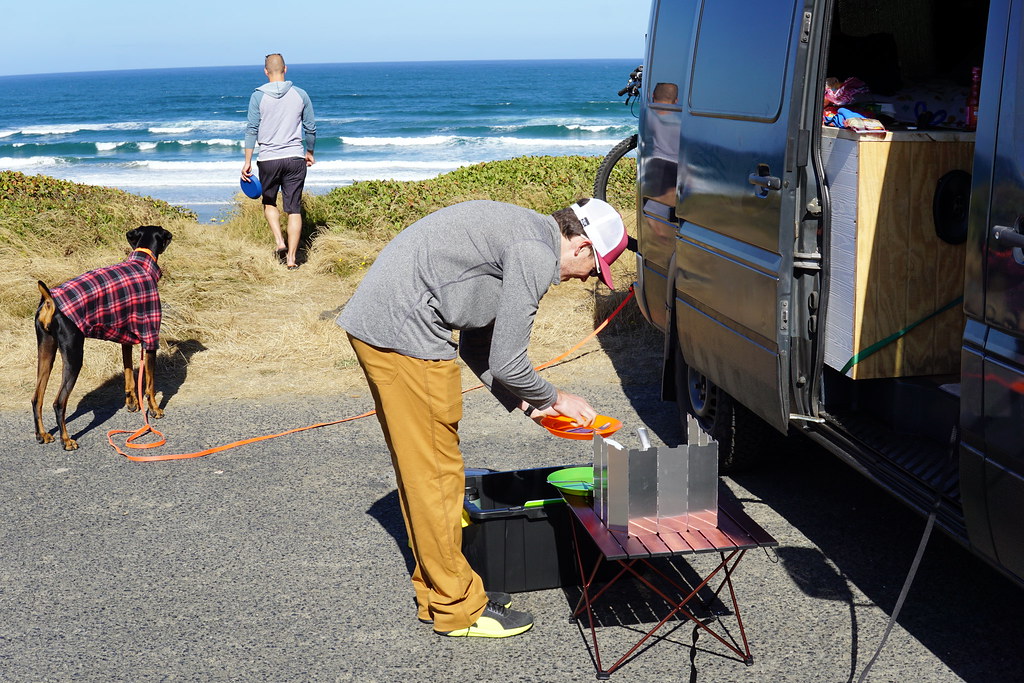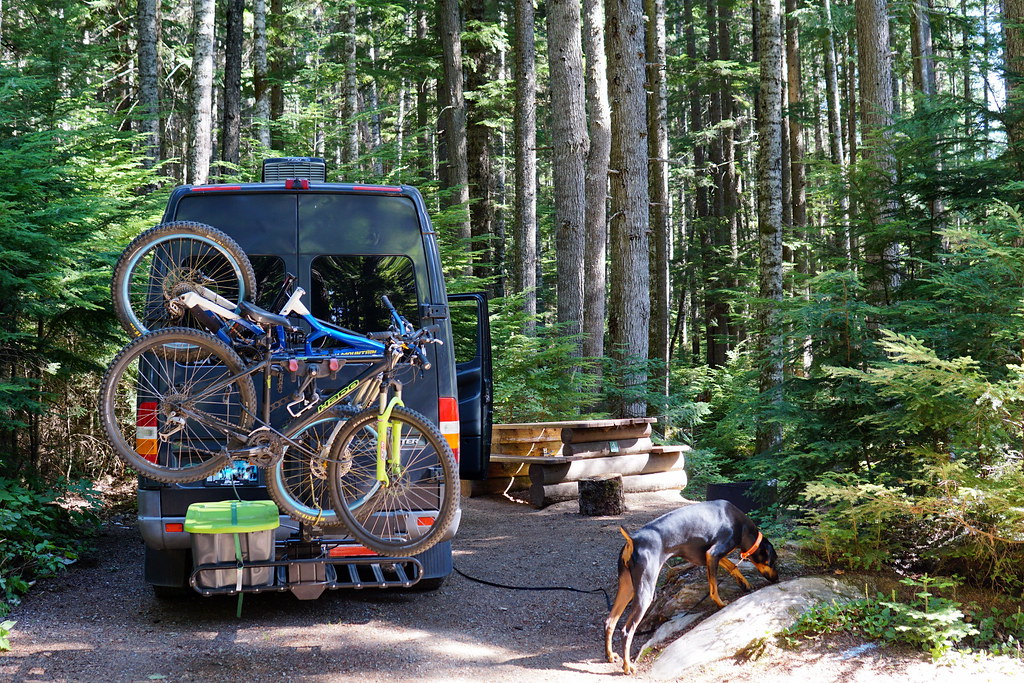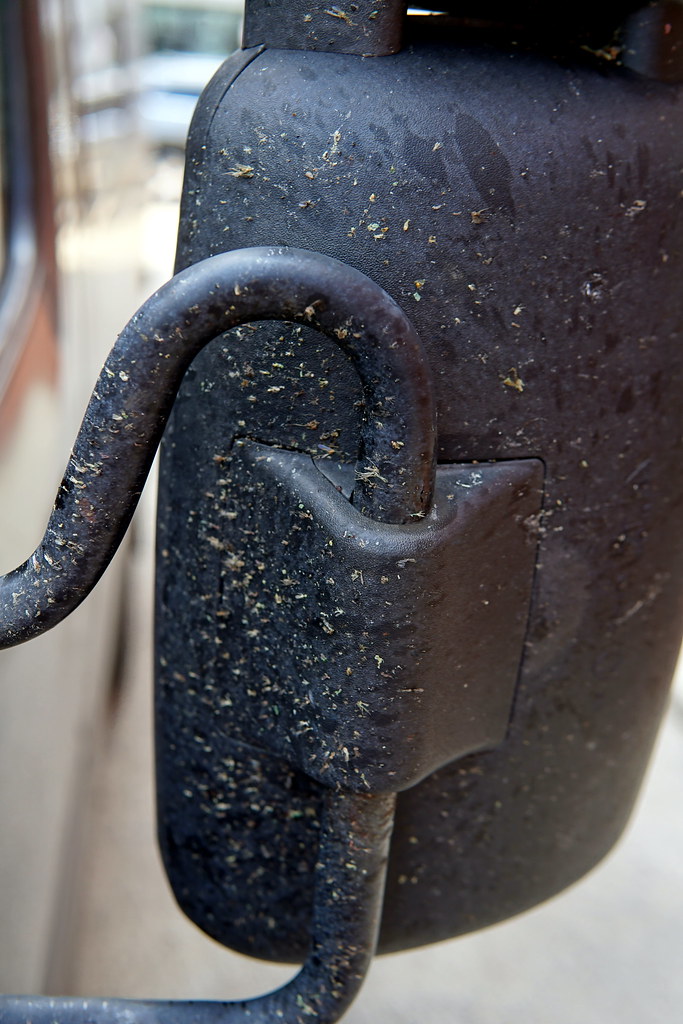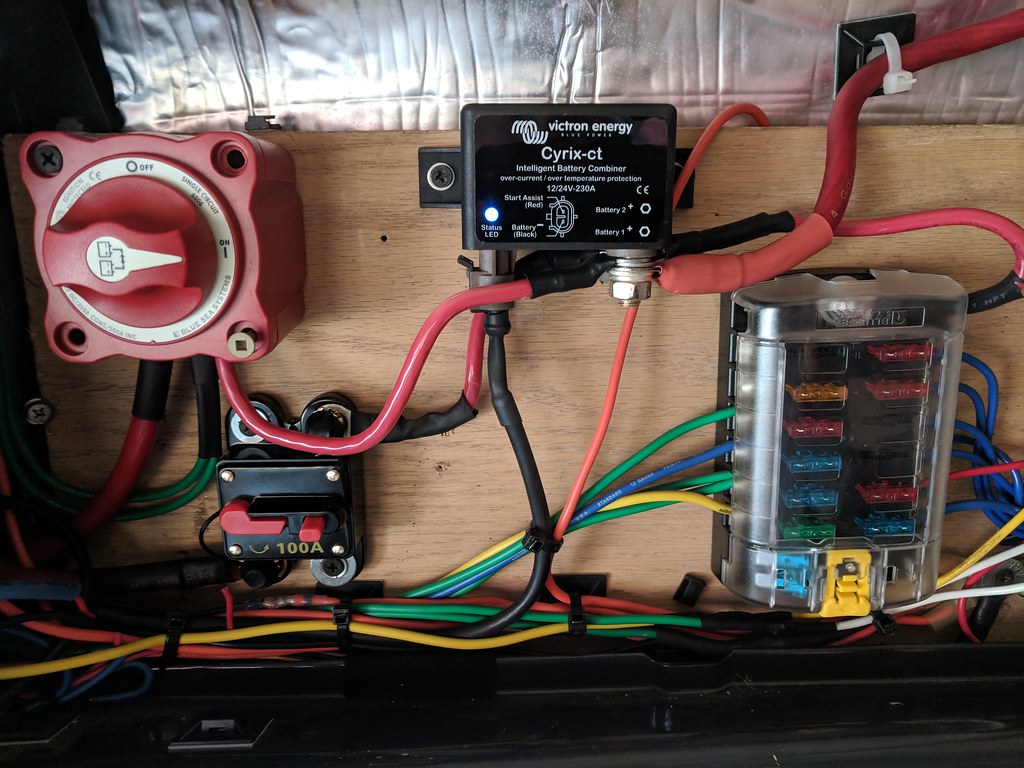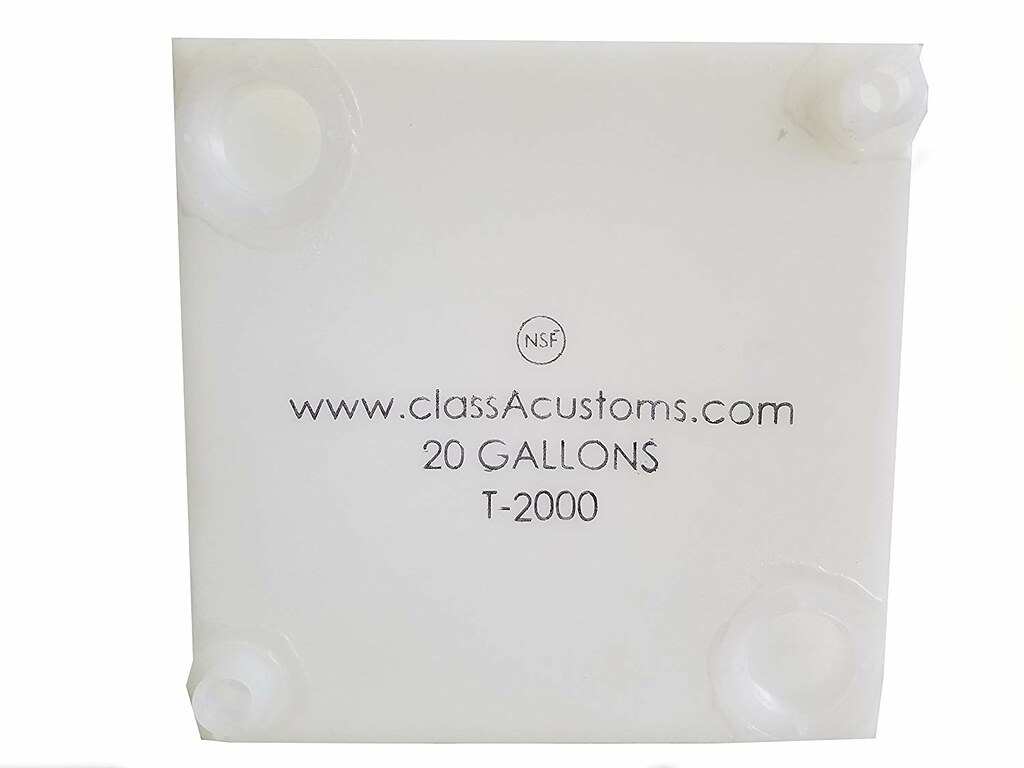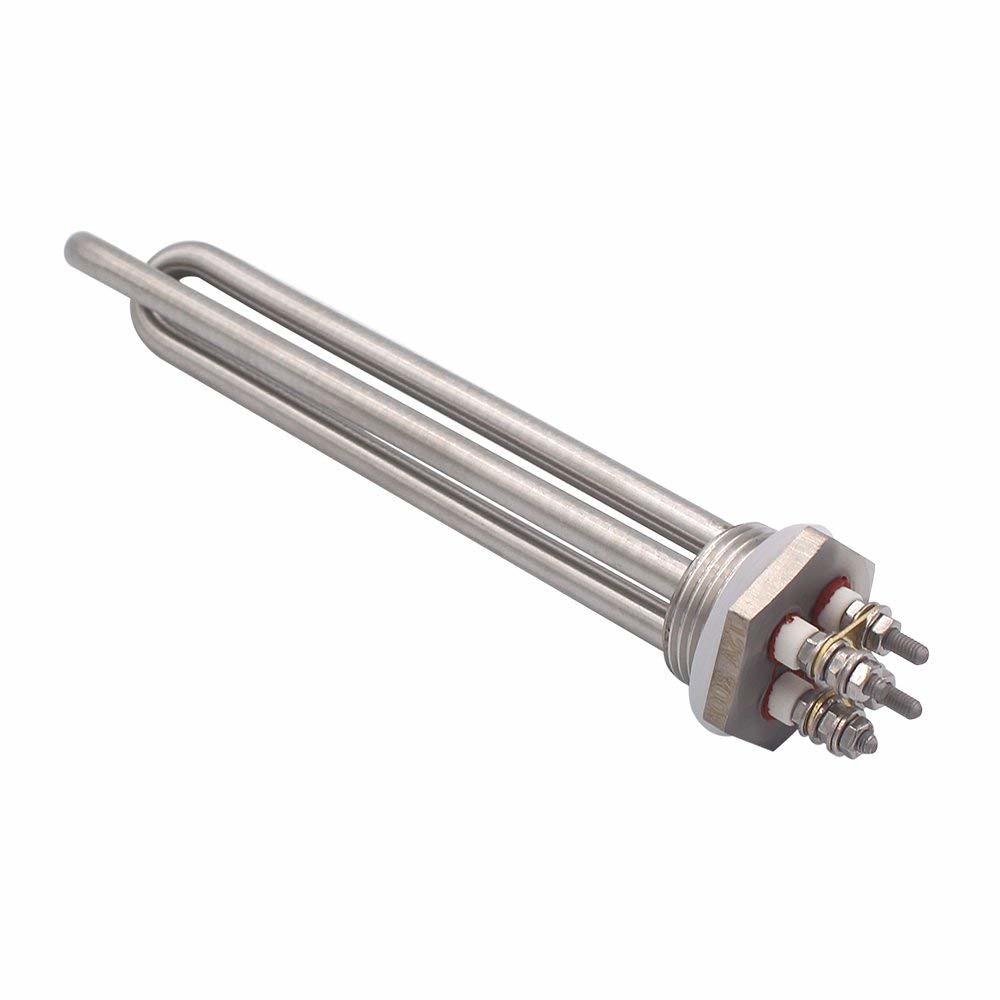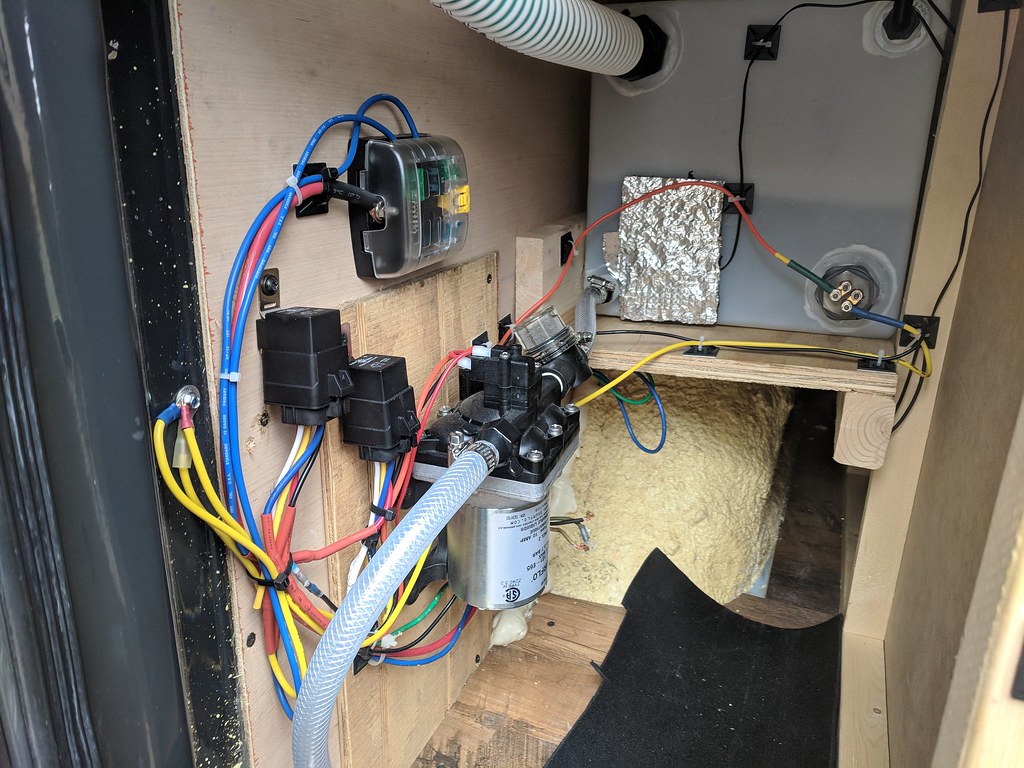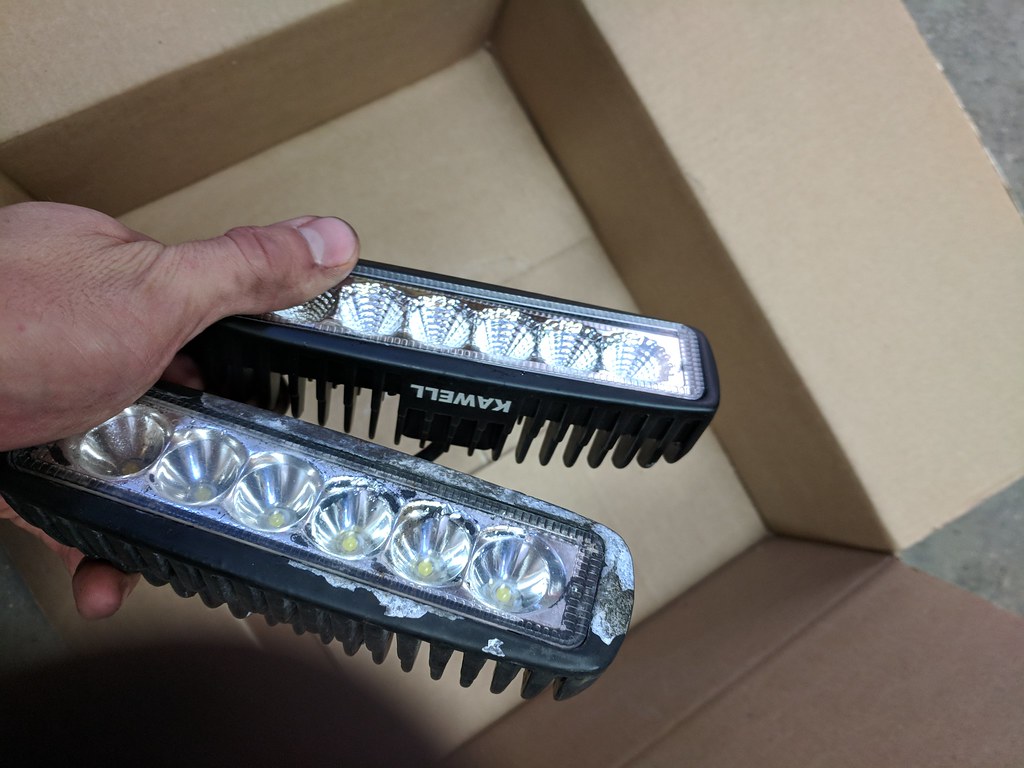alexk243
KulAdventure
Monstaliner Roll-on Bed-Liner Paint
Next thing I wanted to do was to deal with and prevent body rust. I had a few spots coming through on the bottom of the body.
My game plan was to monstaline the bottom 25% of the van (monstaliner website). I really liked the monstaliner, it was a roll on application that I think anyone can do and make it look decent. Once all the rust was removed I felt like this would create a strong rust preventative barrier that would look good also without having to match factory paint.
Picture of it after the bottom 25% monstalined:

First thing I did was pull off all of the plastics (mud flaps and wheel well trim). Secondly I sanded down and removed all the rust. I like an angle grinder with sanding discs, they are powerful though so be careful, but nothings better if you have to remove a lot of rust.




Once all the rust was removed I POR-15'ed the rust and bare metal and let that dry. I welded in metal pieces and used epoxy to seal up any rust holes that I punched through. I like PC-7 epoxy as it is less runny that most and is easily sand-able.
You can see where I welded in new metal and epoxied holes:

The welding and epoxy job didn't look great, but that is why I chose monstaliner, it wont really show the surface defects of my repairs due to the textured surface of it.
So once the POR-15 dried I taped off the area to be painted (very important to be precise and use GOOD painters tape). Once taped I sanded the entire area to be painted with a 180 grain sandpaper, cleaned it and then got ready to paint.




The monstaliner process is pretty straightforward and is better explained by them (Instructions from manufacture) but here are some tips I learned:
-Be ready to paint both coats within 10 hours. Once mixed its shelf life is 6-10hrs
-Buy extra rollers from them. The rollers make the patter and if the roller gets damaged you will have a defect in your pattern (wont look good).
-Touch up with roller only, do not use a brush, it will ruin the pattern.
-Check temp and humidity
-When taping, tape inside the doors as well as you will be painting inside the doors.
-Prepare to paint inside doors and all trim and leave doors open to dry.
I let the first coat sit overnight and did not have a problem with it. Second coat went on fine and turned out well. I used the 1 gallon kit for the area shown per their recommendation and I think that was the perfect amount.
Ill post more pictures of the final result soon, but its holding really well and looks amazing.
good video on it by manufacture
Next thing I wanted to do was to deal with and prevent body rust. I had a few spots coming through on the bottom of the body.
My game plan was to monstaline the bottom 25% of the van (monstaliner website). I really liked the monstaliner, it was a roll on application that I think anyone can do and make it look decent. Once all the rust was removed I felt like this would create a strong rust preventative barrier that would look good also without having to match factory paint.
Picture of it after the bottom 25% monstalined:

First thing I did was pull off all of the plastics (mud flaps and wheel well trim). Secondly I sanded down and removed all the rust. I like an angle grinder with sanding discs, they are powerful though so be careful, but nothings better if you have to remove a lot of rust.




Once all the rust was removed I POR-15'ed the rust and bare metal and let that dry. I welded in metal pieces and used epoxy to seal up any rust holes that I punched through. I like PC-7 epoxy as it is less runny that most and is easily sand-able.
You can see where I welded in new metal and epoxied holes:

The welding and epoxy job didn't look great, but that is why I chose monstaliner, it wont really show the surface defects of my repairs due to the textured surface of it.
So once the POR-15 dried I taped off the area to be painted (very important to be precise and use GOOD painters tape). Once taped I sanded the entire area to be painted with a 180 grain sandpaper, cleaned it and then got ready to paint.




The monstaliner process is pretty straightforward and is better explained by them (Instructions from manufacture) but here are some tips I learned:
-Be ready to paint both coats within 10 hours. Once mixed its shelf life is 6-10hrs
-Buy extra rollers from them. The rollers make the patter and if the roller gets damaged you will have a defect in your pattern (wont look good).
-Touch up with roller only, do not use a brush, it will ruin the pattern.
-Check temp and humidity
-When taping, tape inside the doors as well as you will be painting inside the doors.
-Prepare to paint inside doors and all trim and leave doors open to dry.
I let the first coat sit overnight and did not have a problem with it. Second coat went on fine and turned out well. I used the 1 gallon kit for the area shown per their recommendation and I think that was the perfect amount.
Ill post more pictures of the final result soon, but its holding really well and looks amazing.
good video on it by manufacture
Last edited:

